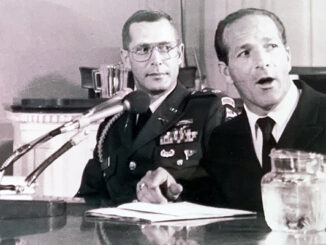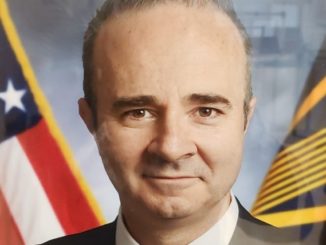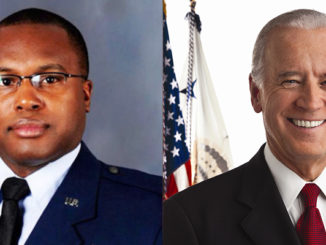
By David Smallwood, Editor-in-Chief
MilitaryCorruption.com
There I was, standing in a bookstore in Tokyo searching for any book written in English. I noticed on the top shelf a book with the words “Day of Deceit” on the spine. At first I thought it was a woman who wrote it about her cheating husband, but when I pulled it from the shelf there was a picture of the USS Arizona as she sank to the bottom and a half-tone photo of President Franklin D. Roosevelt (FDR).
I thought to myself that’s very odd. What in the world is this particular book doing in a bookstore in Tokyo? I had to have it at any cost. I felt a book about Pearl Harbor in a Japanese bookstore with the price tag in Yen was, at the very least, a collector’s item. Because, at one time I had served as a pilot in the Navy, the subject captured my interest.
On my lunch hour, I would walk to the beautifully manicured area around the Imperial Palace reading this remarkable book about the attack on Pearl Harbor. Like most Americans, I believed the attack on Pearl Harbor was completely unprovoked and therefore dastardly and evil. I was wrong about the attack being a surprise and unprovoked.
Japan’s attack on Pearl Harbor was provoked, and while it was a total surprise to our military forces in Hawaii, the President and our Intel community knew it was coming for days and possibly weeks. We had broken the Japanese code in the summer of 1941. BTW, it was a woman who broke the code and never got the credit for it, but that’s all in the book.
After reading this extraordinary book, I contacted the author Robert Stinnett and told him how his book had opened my eyes. I asked him if he needed me to do any research for him in Japan while I was there. He was excited to have a man in Japan to run down leads if he needed.

I asked Bob Stinnett what motivated him to write a book on Pearl Harbor. He said he was working for the newspaper in Oakland, California and the editor wanted him to do a nice article for the paper for Pear Harbor Day.
Bob got right to work. Because he had served in the Navy at the tail end of the war, he found his research to be a labor of love. He did the article, but during his research for his article he caught the Navy lying to him.
He thought to himself, why in the world would the Navy want to conceal something that occurred decades ago. The Navy’s deception made him extremely curious and his curiosity initiated a research project that went over twenty years and culminated with his remarkable book entitled Day of Deceit.
President Roosevelt could speak, read and write German fluently. When Hitler was rising to power and giving one speech after another, FDR did not need an interpreter, he could understand immediately everything Hitler was ranting about.
FDR knew Hitler would rise up to threaten the world, but he had a major problem. The memory of WWI with it’s horrible savageries was still fresh in the minds of all Americans.
The American people wanted nothing to do with another conflict in Europe. As far as many Americans were concerned, they preferred that Hitler have what he wanted in Europe as long as no more of our soldiers experienced mustard gas again. FDR could not go to war with Germany unless the American people were behind him, no matter how badly things were going.
Navy Lieutenant Commander Arthur H. McCollum, USN who was raised in Japan and knew the Japanese language and culture told some friends or coworkers that if President Roosevelt wanted to get into a war with Germany, that could be easily arranged by provoking Japan with a series of provocative actions they would view as an encroachment on their sovereignty.
Because Japan signed the Tripartite Pact on September 27, 1940, with Hitler and Mussolini, if America was attacked by any of the three, we would be at war with all three. LCDR McCollum drafted up a memo outlining a strategic plan to provoke Japan to attack America.
It became known as the eight-action memo. Bob Stennett believed McCollum’s memo became America’s secret foreign policy to provoke Japan to do something against us militarily and bring America into the war against all three signers of the Pact.
The last item on the list of eight provocative actions was to cut off all oil to Japan along with Britain, China and the Netherlands. And just like clockwork, Japan assembled their warships in Northern Japan and headed East in the North Pacific Ocean, destination Hawaii.
Within an hour of their departure from Japan, an order came from Washington to sweep the Northern Pacific Ocean free of all ships, civilian and military. The objective was to avoid spooking the Japanese fleet. There was a concern that if their movement had been detected, they might delay or cancel the planned attack. Washington was helping to pave the way for their attack.
The Japanese armada ran into a hell of a storm and ended up breaking radio silence to reassemble all their ships. Their radio transmissions were picked up by our listing stations in Alaska and elsewhere. Thirty-one Japanese warships made a right turn and headed South toward a sleepy Hawaii, zeroing in on our Army and Navy military bases on Sunday, December 7, 1941, (77 years ago).
American intelligence knew that if Japan were to attack America, their fleet would need to be refueled. American spooks were told to pay particular attention to the differences between messages from Japanese warships and Japanese oil tankers. Each radio had it’s own particular set of idiosyncrasies which could be detected by a trained listener.
The attack on Pearl Harbor was anything but a surprise to American intelligence operatives. The American government knew the attacking force was on her way from Japan. After the attack occurred, all the military spooks in military intelligence were threatened if they divulged anything they knew.
Obviously, it’s important to protect processes and methods, but for many in Washington it vitally important to keep secret the fact they knew the Pearl Harbor Attack was coming. Because, by failing to warn our fleet in Hawaii they were complicit in the murder of thousands of people.
Makes us wonder how many radio operators met a sudden and premature death that was labeled as an accident. Whoops! I guess I’ll be accused of perpetuating an unsubstantiated conspiracy theory, but all I’ve done is simply asked the question. Were there any suspicious deaths of people who may have had knowledge the Japanese fleet was coming in for the kill? I guess we will never know.

The attack on Pearl Harbor gave FDR just what he desperately needed. Overnight, America became a war monger. After hearing what was tantamount to shooting someone in the back, Americans got very angry and demanded “justice” against Japan. But, FDR focused in on Hitler’s Third Reich and told Admiral Nimitz do do what he could do with limited resources while America zeroed in on Adolf Hitler.
The President’s plan was a good one, but why the hell didn’t he call up Admiral Kimmel and General Short in Hawaii to warn them of the impending attack. Apparently, American policy makers decided the more blood spilled, the more anger would be manifested and the easier it would be to convert that hatred into a declaration of war.
FDR could have told Admiral Kimmel something like, ‘Kimmel, this is President Roosevelt. I want you to get your ass out of bed and fire up the boilers on every ship in the harbor and put out to sea immediately. You’ve got the whole Jap Navy bearing down on you. We estimate that in four to six hours, they will launch their strike aircraft from three aircraft carriers. If the Japanese do in fact attack Pearl Harbor as we believe is their intention, then swing around on them and destroy them when their planes are returning low on fuel and ordinance expended. The time to act is NOW, NOW, NOW and send every single Japanese warship to Davy Jones Locker.’
Had FDR warned Admiral Kimmel, when Japanese aircraft rounded Diamond Head they would have found a few rowboats in the harbor and our ships would be out sinking their aircraft carriers leaving attacking planes with nowhere safe to land. Had President Roosevelt warned Kimmel, he still would have been able to galvanize support from the American people to shed their isolationist views and go after the Bohemian Corporal (Adolf Hitler).
FDR’s intentional failure to make sure the military was warned resulted in seven of our warships sunk, 2,897 killed (1,177 on the USS Arizona alone), 879 wounded and 26 missing. Almost two weeks after the Arizona went to her watery grave, on Christmas Eve 1941, workmen and divers could hear tapping noises coming from inside the ship of sailors who were trapped and slowly suffocating to death.
Imagine if you were taking a bath and someone turned off the lights and locked and sealed the doors so you could not get out of the bath tub for two weeks. Eventually, you begin to realize you’re having trouble breathing because the oxygen is slowly being used up. Our sailors were alive for two weeks or more weeks, languishing in a watery dark grave as life slowly ebbed away. To their last breath, our sailors were praying their rescuers would be able to cut through the steel hull in time to save them. Many died a horrible death similar to being buried alive.
FDR’s plan to provoke Japan and make American angry worked handsomely. We first went after Germany, then turned our guns on Japan. Winston Churchill once said that history is written by the victors, and that he would write history. Make no mistake about it, because of silence of the vanquished, history is filled with lies and deceptions.
The attack on Pearl Harbor was a set-up and thousands of people died that should not have died. Stennett wrote that FDR was utterly shocked at the devastation the Japanese wrought on our fleet. No one in Washington took the Japanese military capability seriously, including President Roosevelt.
For those who are not afraid to be called a conspiracy nut, I recommend you get this book and keep it as a reference on your bookshelf. It’s an eyeopener to be sure. Author Robert Stinnett didn’t have an axe to grind. He sought the truth at every turn and came to the logical conclusion that FDR knew the Japanese were going to attack Pearl Harbor and did nothing to stop it.
While all signs point to President Roosevelt probably having knowledge of the pending attack, there is only circumstantial evidence. And thus, the importance of making sure that as President you have PLAUSIBLE DENIABILITY so that history does not treat you harshly.
Robert Stinnett methodically researched the events leading up to the Pearl Harbor attack and produced a tremendous book on the topic. Hollywood doesn’t want to do a movie that might portray FDR and his cronies in a bad light, so don’t look for a movie on this subject anytime soon. We are honored to give this terrifically researched book a full FIVE STAR rating.
Day Of Deceit: The Truth About FDR and Pearl Harbor
Sometimes history is filled with lies and sometimes a brave person comes forward to expose those lies. Our Navy was set up for the kill to get us into WWII



